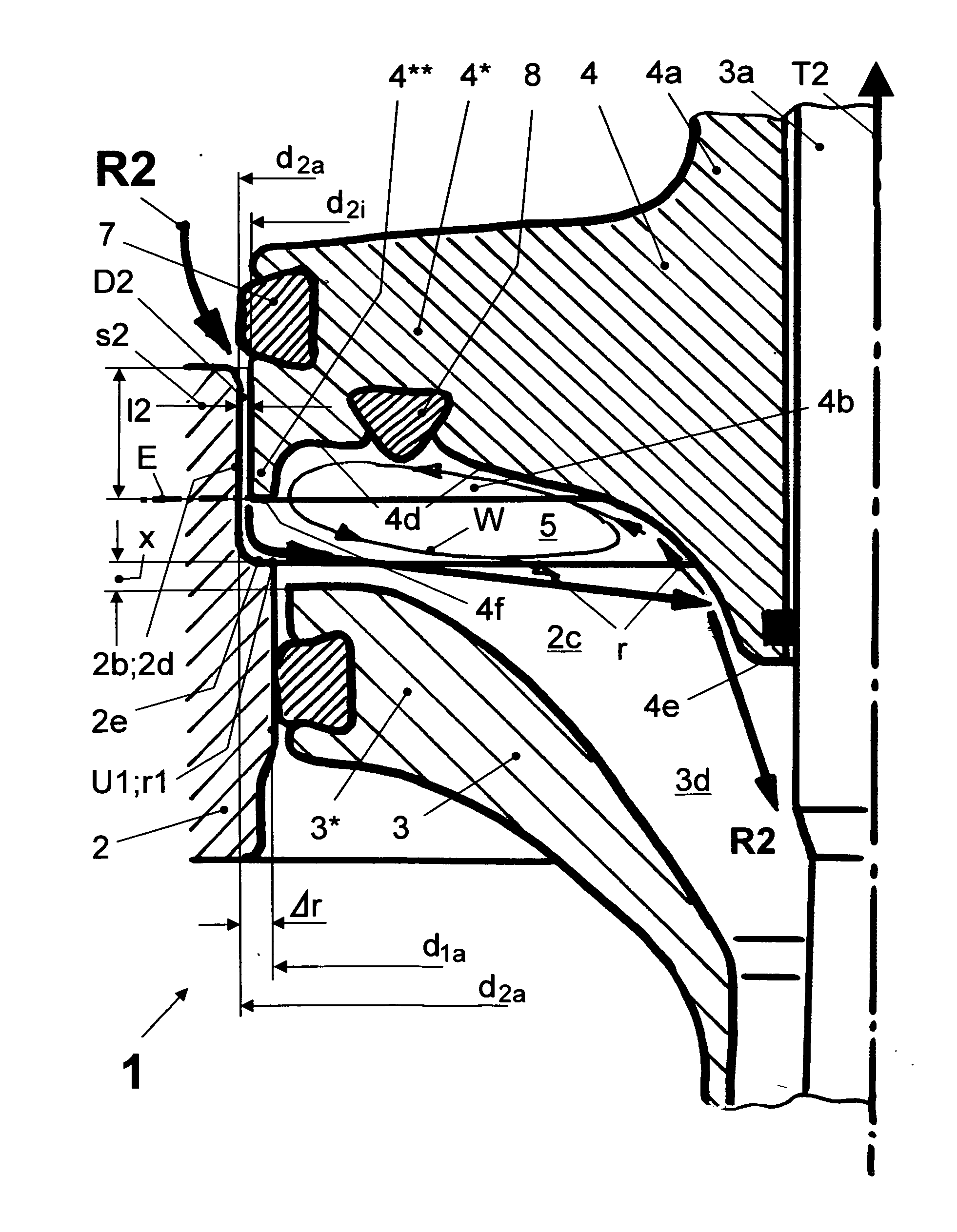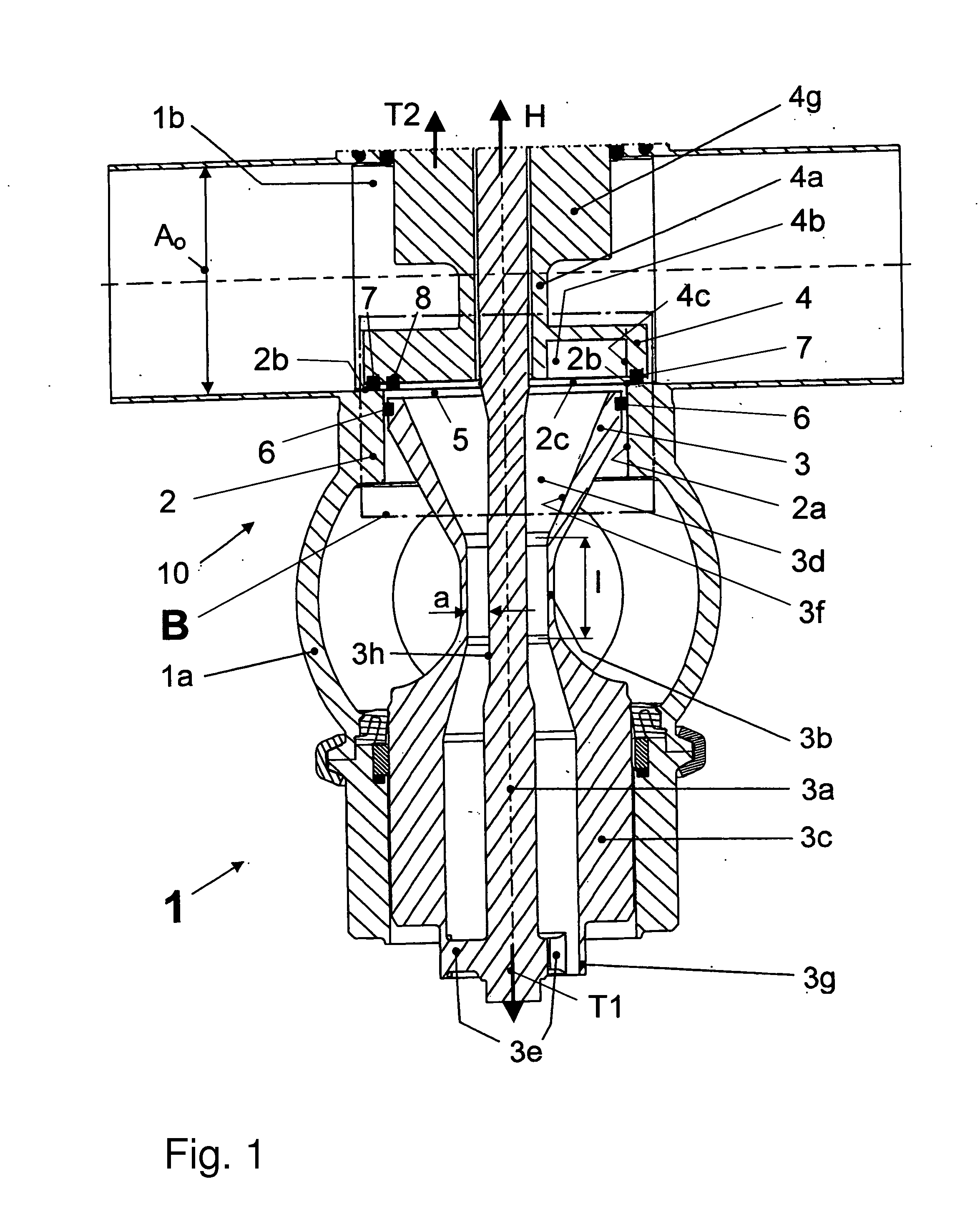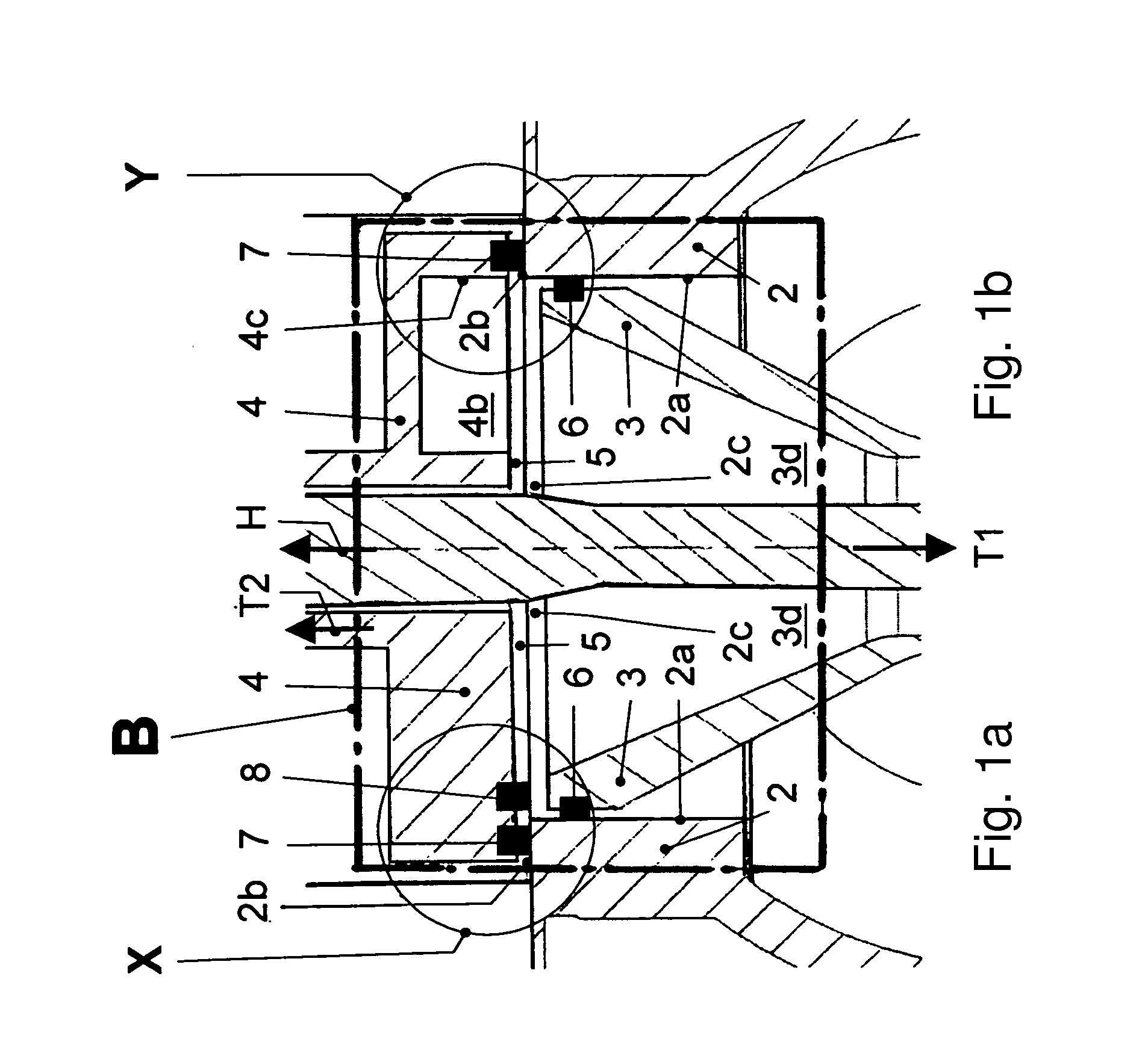Double-seat valve with a seat-cleaning function
- Summary
- Abstract
- Description
- Claims
- Application Information
AI Technical Summary
Benefits of technology
Problems solved by technology
Method used
Image
Examples
Embodiment Construction
[0059]The double-seat valve 1 with a seat-cleaning function according to the invention (FIGS. 1, 1a to 1k) consists mainly of the valve housing 10 with a first and a second valve housing part 1a, 1b, the two independently moveable closing elements 3 and 4 with the respectively associated adjusting rods 3a, 4a and a seat ring 2, which establishes a connection between the valve housing parts 1a, 1b via an inside connection opening 2c.
[0060]The first closing element 3 (independently driven, active closing element) designed as a pusher piston is received in a sealing manner in the closed position of the double-seat valve 1 in a first seating 2a formed by the connection opening 2c, which is designed as a cylindrical seating (FIGS. 1, 1a to 1k, 2 to 4, 7). For this, a first seal 6 is provided in the pusher piston 3, which acts together with the first seating 2a exclusively through radial pre-tensioning (radial seal in sliding engagement). The second closing element 4 (dependently driven,...
PUM
 Login to View More
Login to View More Abstract
Description
Claims
Application Information
 Login to View More
Login to View More - R&D
- Intellectual Property
- Life Sciences
- Materials
- Tech Scout
- Unparalleled Data Quality
- Higher Quality Content
- 60% Fewer Hallucinations
Browse by: Latest US Patents, China's latest patents, Technical Efficacy Thesaurus, Application Domain, Technology Topic, Popular Technical Reports.
© 2025 PatSnap. All rights reserved.Legal|Privacy policy|Modern Slavery Act Transparency Statement|Sitemap|About US| Contact US: help@patsnap.com



